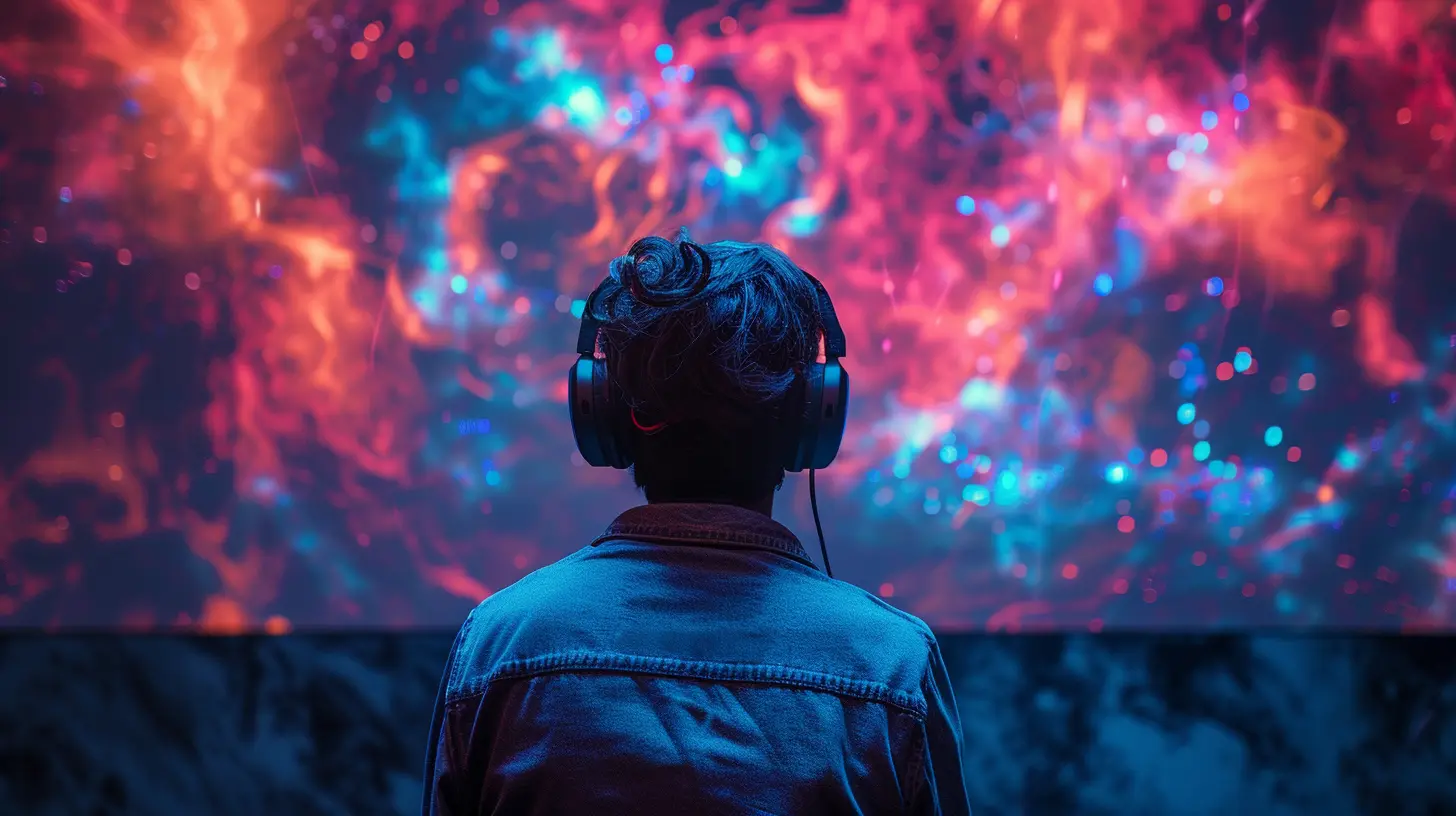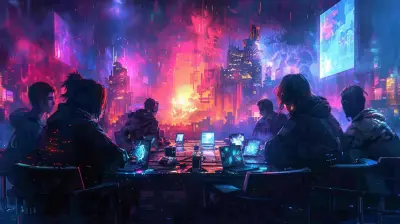Soundscapes that Immerse: Achieving Auditory Realism in Video Games
21 July 2025
Let’s talk about something we don’t really see, but definitely feel—sound in video games. Have you ever turned a corner in a horror game and felt your heart race before you even saw anything? That rush? That’s sound at work. Whether it’s footsteps echoing in a lonely corridor, the subtle hum of a spaceship, or birds chirping in a peaceful meadow, the right soundscape can pull you into a game world like nothing else.
We often get caught up in graphics and visuals—and sure, those are important—but audio? It's the glue that holds the immersive experience together. Today, we're diving deep into how developers create those magical moments where you forget you're holding a controller and start living inside the game. Strap in.

Why Sound Matters More Than You Think
Let’s be real for a second. Most of us don’t immediately think about audio when we pick up a new game. We look at gameplay, trailers, maybe even the storyline. But the moment you hit "Start," it’s the sound that quietly takes over and steers your emotions.Think about games like The Last of Us, Red Dead Redemption 2, or Hellblade: Senua’s Sacrifice. What made them unforgettable? It wasn’t just the plot or the graphics. It was the creak of doors, the ambient hum of wind, or the voices whispering in Senua’s ears.
Audio in games works just like a movie soundtrack—but smarter. Because unlike movies, video games are interactive. You’re not just watching; you’re in it. The sound reacts to you, and that’s pretty freaking cool.

What Exactly Is a Soundscape?
Before we go deeper, let’s clear that up. A soundscape is the collection of all the sounds in a game environment—ambient noise, music, effects, and sometimes even silence. It’s what makes a forest feel like a forest and not just a green texture on your screen.Imagine walking through a frozen wasteland. You might hear the crunch of snow underfoot, wind howling past your ears, a distant wolf howling... that’s a well-crafted soundscape. It's a sonic world layered in just the right way to trick your brain into believing it's real.

Building Immersive Soundscapes: The Key Ingredients
So, how do game developers pull this off? It's a mix of art, science, and a little bit of magic.1. Directional Audio and Spatial Awareness
When you're wearing a headset and hear footsteps behind you, do you turn around in real life? Yeah, me too. That’s directional audio at play.Thanks to tech like binaural and 3D audio, sound can now be positioned with crazy precision. It’s not just left or right anymore—it’s above, below, behind, far, near. Games like Resident Evil Village and Call of Duty: Warzone use it like pros. You can "feel" where someone is without even seeing them.
2. Dynamic Range and Environmental Interaction
Ever notice how your footsteps change when you walk on grass versus metal? That’s no accident. It's dynamic range and environmental response.Modern games track what material your character is interacting with and change the sounds accordingly. Walk into a cave? Expect some echo. Standing in a rainstorm? Every tap, splash, and drip is customized to the environment.
The coolest part? This isn't just fluff. It adds vital realism. Your brain notices when something doesn't sound right—even if you don't consciously catch it.
3. Adaptive and Reactive Soundtracks
Let’s talk about music. Not just background tunes that loop (though those are nice). I mean adaptive music—tracks that shift based on what you’re doing.Fighting a boss? The tempo ramps up. Sneaking past enemies? A low, tense rumble creeps in. Games like The Legend of Zelda: Breath of the Wild or God of War lead with this.
These soundtracks react to your choices, upping immersion and emotion on the fly. It’s like the game is scoring your life in real time. Kinda epic, right?
4. Voice Acting and Layered Dialogue
Voice acting, when done right, can make or break a game's realism. We're not just talking about the main cutscenes anymore. A truly immersive game has layered background chatter, NPC discussions, and character reactions tied to gameplay.Rockstar Games is a standout here. In Red Dead Redemption 2, walk through a town and you’ll hear gossip, arguments, even side comments when your character stinks (seriously). It's a living, breathing world woven together with sound.
5. Silence as a Sound Tool
Here's a twist—sometimes the absence of sound is more powerful than any orchestra. Silence creates tension. It's that awkward void before something jumps out. Horror games use this masterfully, but even action games build suspense or emotional beats using quiet moments.Remember: silence is not nothing. It’s a choice. And when used with purpose, it can speak volumes.

The Tech Behind the Magic
You might be wondering, how do developers even create these complex soundscapes? Let's peek behind the curtain.Audio Middleware: The Unsung Hero
Most game studios use audio middleware tools like Wwise or FMOD. These let developers blend, layer, and program sound events into the game engine without relying purely on code.Want a thunderclap that feels random but isn’t? There’s a system for that. Need water footsteps that adjust based on depth? Yep, that too.
Real-Time Processing and Occlusion
Sound in real life bounces, gets muffled, and behaves differently in different spaces. Modern games simulate that with real-time processing. For example, in Battlefield, gunshots behave differently indoors vs outdoors. They echo, distort, and even get muffled by walls—just like real life.High-Fidelity Recording and Foley Work
What you hear in-game didn't just come from a synthesizer. It was probably recorded in a studio by sound designers with a pile of weird props.Foley artists recreate real-world sounds—leather creaking, swords clashing, doors creaking—from scratch. The realism you hear? That’s their masterpiece.
Games That Absolutely Nailed It
Let’s tip our hats to some games that mastered the art of soundscapes.Hellblade: Senua’s Sacrifice
This game is a psychoacoustic ride. It uses binaural audio to simulate auditory hallucinations. Play it with headphones, and you’ll hear voices swirling around your head. It’s unsettling, emotional, and brilliant.Red Dead Redemption 2
From the rustle of trees to the babble in saloons, RDR2’s soundscape is eerily real. You can close your eyes and still feel like you’re in the Wild West.The Last of Us Part II
This one’s an emotional rollercoaster, and the sound design plays a massive role. The subtle creaks in abandoned buildings, the way Ellie’s breathing changes when she’s scared—it all adds weight to every moment.Alien: Isolation
Want to experience true fear? This game’s sound design is a masterclass in suspense. Every beep, hiss, and echo makes you doubt your safety. The AI alien reacts to sound too, so every noisy move could get you killed. Wild.
The Rise of 3D Audio and Next-Gen Gaming
With the arrival of next-gen consoles like the PS5 and Xbox Series X, audio has levelled up. These beasts support hardware-accelerated 3D audio. What does that mean for you?It means better precision, realism, and immersion. Sony even developed their own spatial audio engine (Tempest 3D AudioTech). Combine that with high-end headphones or surround sound, and you’re basically inside the game.
Challenges Developers Face
Of course, none of this is easy. Crafting an immersive soundscape takes time, budget, and insane attention to detail.Balancing realism with gameplay clarity is one big hurdle. If everything sounds so real that it becomes noisy or confusing, players get overwhelmed. So developers walk a tightrope—making it immersive, but still readable.
Also, accessibility matters. Some players rely on sound cues more than visuals. So sound design needs to be cleverly layered without excluding anyone.
The Future: Where Are We Headed?
We’re entering an era where games are becoming more experiential than ever. And sound will lead that charge.Imagine playing in a fully VR world, where the wind changes based on your breathing, or your footsteps cause echoes that warn enemies. That’s not sci-fi. We're getting closer every year.
AI-generated soundscapes, real-time adaptive music, and personalized spatial audio profiles are all on the horizon. The future sounds... awesome.
Final Thoughts
Soundscapes might not be the flashiest part of a video game, but they’re one of the most powerful tools for immersion. They make virtual worlds feel real, pull us into stories, and sometimes, they even make us feel things we weren’t expecting.So next time you boot up your favorite game, do yourself a favor—close your eyes for a moment and just listen. You might be surprised at how much is going on around you.
Whether it’s the emotional violin swell during a cutscene, the ambient chatter of a bustling city, or the haunting silence of a creepy hallway—it’s all working together to transport you somewhere new.
And honestly? That’s the real magic of gaming.
all images in this post were generated using AI tools
Category:
Realism In GamesAuthor:

Greyson McVeigh
Discussion
rate this article
1 comments
Elowis McMahan
Great article! The exploration of auditory realism in gaming truly enhances immersion and enriches the overall player experience. Well done!
August 23, 2025 at 2:50 AM

Greyson McVeigh
Thank you! I'm glad you enjoyed the article and appreciate your thoughts on the importance of auditory realism in gaming.


